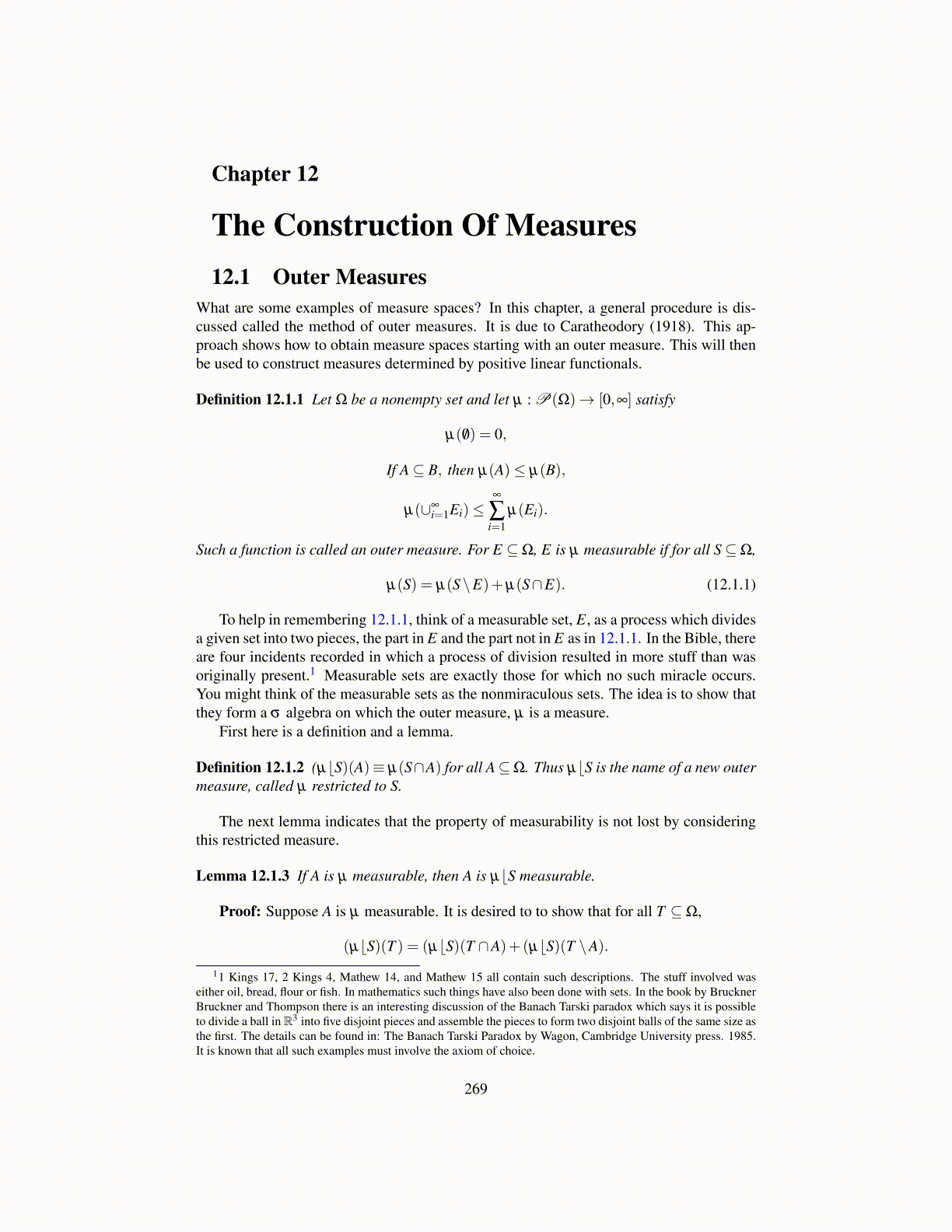
Chapter 12
The Construction Of Measures12.1 Outer Measures
What are some examples of measure spaces? In this chapter, a general procedure is dis-cussed called the method of outer measures. It is due to Caratheodory (1918). This ap-proach shows how to obtain measure spaces starting with an outer measure. This will thenbe used to construct measures determined by positive linear functionals.
Definition 12.1.1 Let Ω be a nonempty set and let µ : P(Ω)→ [0,∞] satisfy
µ( /0) = 0,
If A⊆ B, then µ(A)≤ µ(B),
µ(∪∞i=1Ei)≤
∞
∑i=1
µ(Ei).
Such a function is called an outer measure. For E ⊆Ω, E is µ measurable if for all S⊆Ω,
µ(S) = µ(S\E)+µ(S∩E). (12.1.1)
To help in remembering 12.1.1, think of a measurable set, E, as a process which dividesa given set into two pieces, the part in E and the part not in E as in 12.1.1. In the Bible, thereare four incidents recorded in which a process of division resulted in more stuff than wasoriginally present.1 Measurable sets are exactly those for which no such miracle occurs.You might think of the measurable sets as the nonmiraculous sets. The idea is to show thatthey form a σ algebra on which the outer measure, µ is a measure.
First here is a definition and a lemma.
Definition 12.1.2 (µ⌊S)(A)≡ µ(S∩A) for all A⊆Ω. Thus µ⌊S is the name of a new outermeasure, called µ restricted to S.
The next lemma indicates that the property of measurability is not lost by consideringthis restricted measure.
Lemma 12.1.3 If A is µ measurable, then A is µ⌊S measurable.
Proof: Suppose A is µ measurable. It is desired to to show that for all T ⊆Ω,
(µ⌊S)(T ) = (µ⌊S)(T ∩A)+(µ⌊S)(T \A).
11 Kings 17, 2 Kings 4, Mathew 14, and Mathew 15 all contain such descriptions. The stuff involved waseither oil, bread, flour or fish. In mathematics such things have also been done with sets. In the book by BrucknerBruckner and Thompson there is an interesting discussion of the Banach Tarski paradox which says it is possibleto divide a ball in R3 into five disjoint pieces and assemble the pieces to form two disjoint balls of the same size asthe first. The details can be found in: The Banach Tarski Paradox by Wagon, Cambridge University press. 1985.It is known that all such examples must involve the axiom of choice.
269